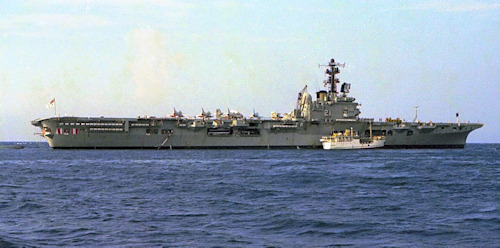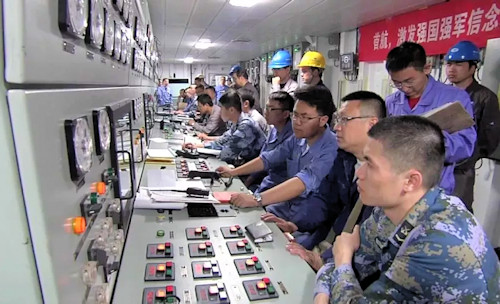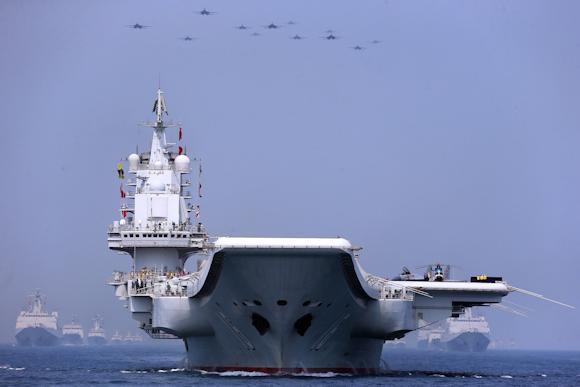According to Chinese military sources quoted by Hong Kong newspaper "South China Morning Post" due to the deterioration of the geopolitical chessboard in East and South Asia, and in anticipation of a future armed conflict for the reconquest of Taiwan, the authorities of Beijing would have given orders to accelerate plans to expand military arsenals to bring their country on an equal footing with the United States of America.
In the case of a conflict in the East China Sea, which would end up opposing Beijing to the United States, Taiwan, South Korea and Japan, the Chinese navy would find itself playing a role of primary importance both in offensive actions aimed at isolating and making Taiwan capitulate. , both in defensive actions aimed at protecting the motherland from the military dominance of the United States and their allies in the Far East Asia.
Originally conceived as nothing more than a major coastal defense force, the Chinese navy (formally â € œMarina of the People's Liberation Armyâ €) began a slow but inexorable modernization starting from the distant 1987 (sponsored by then-admiral Liu Huaqing) , with the aim of deploying the world's largest and most modern oceanic combat force within the 2049. One of the key elements of this modernization is the adoption of aircraft carriers, which Chinese naval strategists rightly identify as the main instrument of projection in the oceans.
 The origin of the Chinese aircraft carrier program goes back to the 1985 when China bought the former Australian aircraft carrier â € œHMAS Melbourneâ € (photo), recently disarmed by the Australian navy. Subsequently, in the 1995 and in the 1996, China bought from Russia the aircraft carriers "Minsk" and "Kiev", once part of the Soviet fleet and then laid up after the end of the "Cold War". For years, the Chinese thoroughly studied the three ships to understand their technological secrets and finally opt for the purchase in the 2000 of the "Varyag", another ex-Soviet aircraft carrier left unfinished in the shipyards in Ukraine.
The origin of the Chinese aircraft carrier program goes back to the 1985 when China bought the former Australian aircraft carrier â € œHMAS Melbourneâ € (photo), recently disarmed by the Australian navy. Subsequently, in the 1995 and in the 1996, China bought from Russia the aircraft carriers "Minsk" and "Kiev", once part of the Soviet fleet and then laid up after the end of the "Cold War". For years, the Chinese thoroughly studied the three ships to understand their technological secrets and finally opt for the purchase in the 2000 of the "Varyag", another ex-Soviet aircraft carrier left unfinished in the shipyards in Ukraine.
After a long work of preparation and modernization, in the 2012 the "Varyag" entered into service with the Chinese navy as a "Type 001" class aircraft carrier with the name "Liaoning", marking the beginning of a new era for Beijing.
The industrial experience acquired with the reorganization of the â € œLiaoningâ € allowed the Chinese to start building their second aircraft carrier, belonging to the â € œType 001Aâ € class, currently engaged in navigation tests (photo below) and which should be delivered within the year.

At the same time, the shipyards of the country of the dragon are building an additional aircraft carrier, belonging to the "Type 002" class, which should soon be added to its "sisters".
Finally, it seems that on the express order of President Xi Jinping, the shipyards of Dalian and Jiangnan have accelerated the process for the construction of well 4 aircraft carriers of the subsequent â € œType 003â € class which will be characterized by a much larger tonnage and will come propelled by a nuclear propulsion (while the three aircraft carriers belonging to the previous classes are all conventional propulsion).
The decision by the Chinese leadership to proceed in great haste with naval rearmament plans, especially with regard to the aircraft carriers, should be taken very seriously as it is a very difficult move to justify, if not for the fact that the country in question have aggressive intentions. Indeed, most geopolitical observers and military analysts believed that China could never deploy an overall 7 force carrier before the 2035 but, observing the stunning work rate of Chinese shipyards and the determination of the Beijing executives to "spend everything you need" in order to see your plans completed by 2025, we cannot but look to the second half of the 20 years with some apprehension.
Photo: 中国 军 网 / web / CCTV












